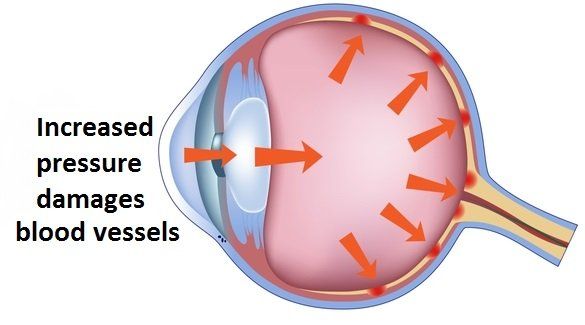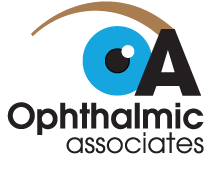What is Glaucoma?
Glaucoma is a condition that causes damage to the optic nerve over time. It is often characterized by elevated intraocular pressure and frequently shows an inheritance pattern. If left untreated, glaucoma can result in irreversible harm to the optic nerve and permanent vision loss. There are several different types of glaucoma:


The most common form of glaucoma is Primary Open Angle Glaucoma (POAG) and results from a failure of the eye’s drainage system. This leads to a slow development of increased pressures over time. Initial damage to the optic nerve is typically subtle, having very little effect on vision. Over time, increased damage to the nerve enlarges the visual defects and eventually leads to blindness if left untreated. POAG is considered a medical condition and can be treated with medicated eye drops, laser surgery to stimulate the drainage system, or glaucoma surgery to create a new drainage pathway.
The second most common type of glaucoma, Narrow-Angle or Angle-Closure Glaucoma (NAG), is predominately found in patients who have short eyes. As the lens of the eye ages it thickens to cause crowding in the anterior chamber of the eye and partial blockage of the drainage system. Although the condition develops slowly, eye pressure will build very rapidly if enough of the drainage system is compromised. Common symptoms of an angle closure attack include dramatic and sudden onset of blurred vision, severe eye pain, headaches, nausea or vomiting, and halos. NAG can primarily be treated with a laser to reduce crowding. Alternative treatments can include cataract surgery to reduce crowding or glaucoma surgery to create a new drainage pathway if too much scar tissue is present.
Other types of glaucoma include Pseudoexfolative Glaucoma, Traumatic Glaucoma, Congenital Glaucoma, Normal or Low Tension Glaucoma, and Pigmentary Glaucoma.




